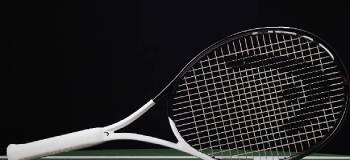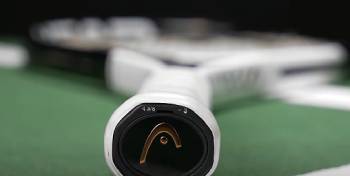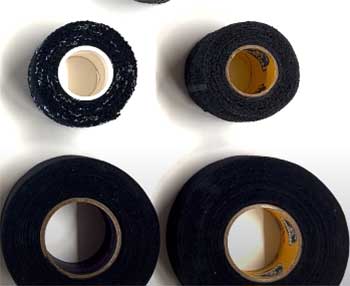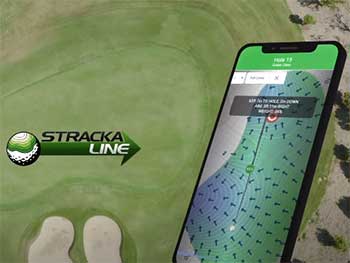If you’re thinking about picking up the Head Speed Pro, my honest advice is to take a moment and read this review before making your decision.
I used this racket extensively, and while it has some solid features on paper, my experience showed otherwise.
You deserve to know both the highs and the lows before dropping your hard-earned money.
My Real Experience with the Head Speed Pro

When I first got my hands on the Head Speed Pro, I was excited. The hype around it was real—marketed as a control-focused racket ideal for advanced players who want precision. I play five times a week, so I figured it would be a perfect upgrade.
At first, I liked how it looked. It has a sleek matte black finish with white accents, and it feels premium when you first grip it.
The specifications seemed to suit my aggressive baseline game. The 18×20 string pattern promised control, and the 100 sq inch head size was supposed to offer a balance between forgiveness and accuracy.
However, within the first few matches, the issues started surfacing.
The first thing that struck me was how stiff it felt. Yes, control was there, but at the expense of comfort.
After a 2-hour session, I could feel the strain on my wrist and forearm. If you’re prone to arm discomfort, this isn’t forgiving in the slightest.
And despite it being marketed as a “pro-level” racket, the feel on contact was surprisingly muted. I expected more feedback from the strings and frame.
Maneuverability was decent, but nothing to brag about. At the net, I struggled with quick volleys. The swing weight feels heavy even though it’s technically balanced.
That’s when I started wondering if I was missing something—or if maybe this racket just isn’t suited for anyone who’s not playing at near-professional levels consistently.
The final nail in the coffin was the inconsistency in performance. Some days, it felt great, and on others, I couldn’t find my rhythm at all.
I switched strings and tensions multiple times, thinking I was the problem, but the racket never gave me the consistency I needed. For the price point, that was a serious letdown.
Who Is the Head Speed Pro Really For?
Let’s be real. This racket isn’t designed for your average weekend warrior.
If you’re someone who plays occasionally or relies on easy power and comfort, the Head Speed Pro will likely frustrate you more than it will elevate your game.
It seems best suited for players with fast, full swings who already have a solid technique.
Advanced club players or aspiring professionals who want to squeeze out every bit of precision might appreciate its strengths.
But even in that bracket, only those who like a stiffer, more demanding frame will get consistent results.
For the rest of us—players who need just a bit of forgiveness and flexibility—it feels like the racket demands more than it gives.
The reward-to-effort ratio just isn’t favorable unless you already play at a high level consistently.
What I Hoped It Would Do (But Didn’t)

Going into this, I had high expectations. I wanted a racket that would give me laser-like control without killing my arm.
On paper, it sounded like a dream—precision-focused with pro-level stability. But the execution didn’t match the promise.
I hoped it would provide a solid feel on contact, allowing me to control rallies and dictate pace.
Instead, I got a muted response that made me second-guess my timing. I was expecting sharp net play and effortless serving mechanics, but the maneuverability and balance made that harder than it should be.
At its best, the Speed Pro teased some moments of excellence. But the consistency never followed.
I was constantly making adjustments—changing grips, tweaking strings, modifying swing paths—all to make up for the racket’s shortcomings.
That’s not how equipment should work. It should elevate your game, not distract from it.
Maintenance and Tips
- String Selection: The Head Speed Pro is highly sensitive to string choice. I tried polyester, multifilament, and hybrid setups, and the only decent outcome came with a soft polyester at 50 lbs tension. Anything higher made the frame even stiffer and uncomfortable. Stick to softer strings and consider frequent restringing.
- String Tension: Lower tension improves comfort and pocketing, which this racket desperately needs. Stay in the 48-52 lbs range to avoid the harsh feedback on contact. If you string too tight, you’ll notice even more discomfort and less forgiveness.
- Grip Customization: If you’re struggling with maneuverability, adding an overgrip or replacing the base grip with something thinner might help. The stock grip feels a bit bulky and doesn’t absorb shock well. I personally swapped mine for a leather grip to improve feel and responsiveness.
- Lead Tape Adjustments: The swing weight feels high out of the box. You can reduce this effect by rebalancing with lead tape near the handle. This tweak improved some aspects of maneuverability for me but didn’t fully fix the core comfort issue.
- Regular Checks: Watch for string notching and grommet wear. Due to the frame’s stiffness, strings break faster, especially with spin-heavy strokes. Inspect your gear frequently to avoid surprise snaps mid-game.
- Vibration Dampeners: I found that using a large dampener helped reduce some of the unpleasant vibrations. It won’t solve the problem entirely, but it’s a must if you stick with this racket.
What Other Players Are Saying?
I’m not alone in this. After browsing forums, reviews, and speaking with other players at my club, a pattern started to emerge.
Many users echo the same frustrations: stiff frame, lack of feel, and arm discomfort.
Some high-level players appreciated the control, but even they admitted it required constant customization to really shine.
On ecommerce platforms, the bad reviews are pretty clear. People mention elbow pain, inconsistent performance, and a lack of “wow” factor.
A few users even returned the racket within a few sessions. That’s not something you’d expect from a product that claims to be top-tier.
So if you’re thinking it’s just a personal thing, it’s not.
There’s a real divide between the marketing of this racket and the actual player experience. And when that many people are reporting similar issues, it’s worth paying attention to.
Pros and Cons of Head Speed Pro

Pros:
- Control: The tight 18×20 string pattern does allow for precise shot placement when you’re feeling confident.
- Stability: On fast exchanges, the frame holds steady, reducing flutter on contact.
- Aesthetic: The design is clean and professional looking, which adds to its appeal.
- Baseline play: When you’re in rhythm, groundstrokes can feel sharp and accurate.
Cons:
- Stiffness: It’s not arm-friendly. Expect wrist and forearm fatigue if you play for long durations.
- Feedback: There’s a lack of feel, making touch shots and net play inconsistent and frustrating.
- Maneuverability: Heavier swing weight makes quick reflexes difficult, especially at the net.
- Inconsistency: Performance varies drastically from day to day; string changes didn’t resolve this.
- Comfort: The racket vibrates on off-center hits, which is jarring and tiring.
- Learning effort: You need to be technically sound to bring out its strengths—which most players aren’t.
- Overpriced: For the performance it delivers, it’s too expensive compared to better rackets in the market.
Also Read: My Thoughts On Cobra Aerojet Vs. LTDx
Head Speed Pro Vs. Other Brands
- Head Speed Pro Vs. Babolat Pure Drive
The Babolat Pure Drive brings a power-packed game without sacrificing comfort. It has a stiffer frame but offers way more pop and responsiveness off the strings.
The open string pattern also gives you more spin and feel compared to the Head Speed Pro.
If you’re a modern baseline player looking to dictate points, the Pure Drive offers a far more satisfying experience.
It’s also easier on the arm, especially during long matches. Overall, Babolat has nailed the blend of power and playability in ways Head missed here.
- Head Speed Pro Vs. Wilson Pro Staff 97
The Wilson Pro Staff 97 is what precision and feel should actually look like.
With its braided graphite and Kevlar construction, it delivers a purer response on contact.
Unlike the Head Speed Pro, which feels a bit dull, the Pro Staff provides excellent feedback. It’s also more versatile at the net, making it a better option for all-court players.
Though it might not generate as much easy power, the control and precision you get are more rewarding and consistent.
- Head Speed Pro Vs. Yonex Ezone 98
If comfort and power matter to you, the Yonex Ezone 98 is a far superior option. It has a larger sweet spot thanks to its isometric head shape, and the racket feels plush without being too soft. Compared to the rigid feel of the Head Speed Pro, the Ezone is easier to swing and much more forgiving on off-center shots. The design is also eye-catching, and you won’t need to constantly adjust your strokes to get the best out of it.
- Head Speed Pro Vs. Prince Phantom 100X
The Prince Phantom 100X is known for its arm-friendly feel and exceptional flex.
If you’re a player who values control but also wants something easy on the joints, this is a clear winner over the Head Speed Pro.
While the Phantom isn’t as stiff or as “pro-level” in specs, it plays better in real-world conditions.
It’s smooth, with great dwell time and better maneuverability. You feel more connected to your shots without that jarring vibration that the Speed Pro tends to produce.
- Head Speed Pro Vs. Tecnifibre TF40 305
The Tecnifibre TF40 305 is another racket that offers serious control but does it with much better balance.
It feels more intuitive in hand and transitions better from baseline to net.
The Head Speed Pro struggles with consistency, while the TF40 feels like it was designed to give players a stable, predictable response every time.
Whether you’re slicing, rallying, or serving, you get more confidence with the Tecnifibre.
It’s everything the Speed Pro promises—but fails to deliver.
Also Read: My Thoughts On Cobra Aerojet Vs. Aerojet Max
Frequently Asked Questions (FAQs)
It depends on what you’re looking for. If you want control and stability and you’re an advanced player, it might suit you. But for most players, it’s uncomfortable, inconsistent, and overpriced.
Novak Djokovic is the headline name associated with the Speed series, but keep in mind that his racket is a customized pro stock version that plays nothing like the retail model.
Technically, it’s evenly balanced, but the swing weight makes it feel head-heavy in practice, especially during fast-paced net play or defensive shots.
The MP version has a more open string pattern (16×19) and is generally easier to handle. It offers more spin and comfort, while the Pro is tighter, stiffer, and built for more advanced control-focused play.
Final Thoughts
After weeks of real on-court experience, I can honestly say that the Head Speed Pro didn’t live up to its promises.
It looks great, and it has specs that might attract competitive players, but the actual performance is a letdown.
Between the stiffness, inconsistent feel, and lack of comfort, it’s a racket that’s hard to recommend unless you’re a seasoned tournament-level player who’s ready to tinker endlessly.
For most players, there are far better and more enjoyable alternatives out there.
Save yourself the frustration and go with a racket that works with you, not against you.

